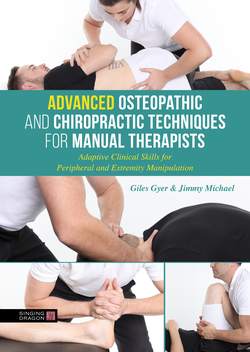Читать книгу Advanced Osteopathic and Chiropractic Techniques for Manual Therapists - Giles Gyer - Страница 13
На сайте Литреса книга снята с продажи.
Effects of manipulation-induced autonomic changes on supraspinal mechanisms
ОглавлениеAs discussed above, there is a complex interaction between the ANS and the pain system, and the PSNS plays a significant role in modulating pain and inflammation. Hence, considering the evidence of immediate sympathetoexcitatory responses following manipulation, Sampath et al. (2015) suggested that these SNS changes might be linked to changes in pain-modulating supraspinal mechanisms. In support of this hypothesis, the authors cited two imaging studies (Ogura et al. 2011; Sparks et al. 2013) that demonstrated the effects of manipulation on several supraspinal structures including the cerebellar vermis, middle temporal gyrus, insular cortex, inferior prefrontal cortex and anterior cingulate cortex. All these structures have been reported to be involved in the regulation of autonomic function (Kenney and Ganta 2011). On the other hand, there has been a growing body of evidence in support of the manipulation-induced neural plastic changes (Daligadu et al. 2013; Lelic et al. 2016; Taylor and Murphy 2010) occurring in various brain structures such as the cerebellum, basal ganglia, prefrontal cortex, primary sensory cortex and primary motor cortex. Taken together, although there is no direct evidence in support of Sampath et al.’s (2015) hypothesis, this might be a fruitful area of research for future studies.
